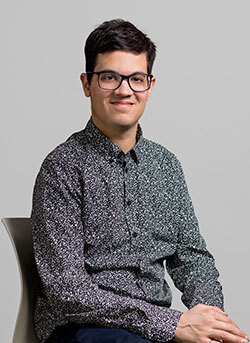Edge Computing: an Unexpected Processing Capacity

Purchase on Istock.com. Copyright.
Since the advent of cloud computing, everything is now stored and managed in the cloud. “However, we are aware that such centralization makes us vulnerable,” Julien Gascon-Samson explains. With the Internet of Things, the number of connected devices has exploded and these devices could store and process part of the data rather than systematically sending everything to the cloud. The goal is to “have some of the information processed at the edge, and, in order to do so, use each device according to need as well as its capacities,” says Professor Gascon-Samson.
In addition to ensuring independence from the cloud, there are other advantages to this solution: sending less data helps avoid network overload, reduces latency, and lowers transmission costs. The researcher has already tested his theories on a connected surveillance camera. Result: Most of the time, the camera can process the information on its own, because without a specific event within its sights, its processing capacity – slower than the cloud’s – does the job. However, as soon as any suspicious activity is detected, the information could be sent to the cloud to be processed faster and more accurately.
“Our challenge is to ensure that we don’t exceed the processing and storage capacity of each connected device,” says the young researcher. He is working on increasing the capacity of each device in order to determine which tasks it could be assigned. The next step will be to change the mentality of individuals and companies that manage everything in the cloud, and change the mindset of cloud service providers who will undoubtedly have to face a paradigm shift.
Research, Teaching and Innovation

Julien Gascon-Samson, professor in Software and Information Technology Engineering Department at ÉTS
Julien Gascon-Samson is interested in all the leading-edge IT issues and readily adapts his research projects to keep up with current issues in the field. From yesterday’s video game networks to today’s cloud computing, his career path was pretty much laid out for him.
After earning a bachelor’s degree in Software Engineering and a master’s in Computer Engineering from Polytechnique Montréal, he received his Ph. D in Computer Science from McGill University. He then completed a postdoctoral fellowship at the University of British Columbia (UBC), where he developed his interest in edge computing. During his fellowship, he created a platform – ThingsJS – that allows developers to code in JavaScript, a universal language. Working with a language shared by every type of device and the Internet will help foster the development of edge computing solutions.
The young researcher has chosen to join ÉTS “because (the school) is well connected to the business world. And today, research is often done with private partners.” The school’s state-of-the-art equipment, business and research agility, and association with Montréal’s Quartier de l’innovation are also some of the ÉTS advantages that convinced Julien Gascon-Samson to share his passion for teaching and training with the Software and IT Engineering Department.


